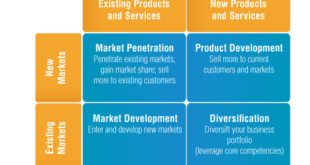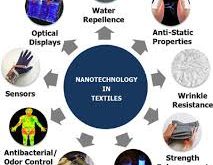Operation of Armed Forces personnel in harsh military terrains for extended tenure period necessitates protection from elements and battle hazards. Harsh military terrains exert profound effects on the physical and physiological performance of the soldiers and can impart serious health hazards on inadequately protected soldiers resulting in mission failure and …
Read More »Li-Fi Technology promise to bring the Internet ot IoT Under the Sea and improve Navy’s Ship and submarine communications
It is predicted that LEDs will be the ultimate light source in the near future powering indoor illumination, outdoor lamps, traffic signs, advertising displays, car headlights/taillights, etc. Now another technique promises to double the utility of light-emitting diodes (LEDs) by using their light as a medium for communication in a …
Read More »Countries developing Hybrid UAS/UGV delivering goods and for rescue missions intelligent transportation systems in smart cities.
There could be no smart city without a reliable and efficient transportation system. This necessity makes the ITS a key component of any smart city concept. While legacy ITS technologies are deployed worldwide in smart cities, enabling the next generation of ITS relies on effective integration of connected and autonomous …
Read More »Lithium-ion Batteries powered Submarines, UUW and torpedoes have enhanced Stealth, endurance, speed and reliability
Batteries have been used on underwater applications for more than a century, for instance, lead-acid batteries have been used in conventionally powered submarines since the end of the 19th century. Since World War II, submarines have used lead acid batteries. Lead acid batteries are heavy, but they’re also a proven …
Read More »Indian Governement’s mega military spending roadmap will spur Foreign Direct Investment (FDI) and Venture Capital (VC) investments in India’s Defense Industry
India shares a 3,323km land border with Pakistan, and an even longer 3,488km border with the People’s Republic of China (PRC), and has territorial disputes with both countries over the ownership of the Northern State of Kashmir and the North Eastern State of Arunachal Pradesh, respectively. Indian military planners consider …
Read More »Developing and implementing plans and strategies for expanding business opportunities with existing and new customers.
our business market, like everything else, will change with time. As your business matures and your market share steadily increases, you will probably begin to encounter the growth limits of your original target market. Another method of market expansion involves developing new products that you will introduce to the same …
Read More »Australia’s Quantum Technology Industry Roadmap provides a vision for unlocking the potential of emerging quantum technologies
Emerging quantum technology applications will present substantial opportunities for economic growth, improving productivity and creating new jobs in the coming decades. Quantum technologies – which are powered by incredible advancements in quantum physics research – could accelerate drug and materials development, enhance national security, increase productive mineral exploration and improve …
Read More »New technologies to aid Ocean search and rescue operations
Search and rescue (SAR) is the search for and provision of aid to people who are in distress or imminent danger. The general field of search and rescue includes many specialty sub-fields, typically determined by the type of terrain the search is conducted over. These include mountain rescue; ground search …
Read More »Nanotechnology based smart textiles protects against chem, bio agents and also initiate movement in response to a stimulus
Wearable electronic textiles (e-textiles) have become a focus of significant research interest due to their potential applications in sportswear, military uniforms, environmental monitoring and health care. Smart textiles are defined as textiles that can sense and react to environmental conditions or stimuli, from mechanical, thermal, magnetic, chemical, electrical, or other …
Read More »DARPA’s underminer to develop tunneling robots and concepts for underground operations for emerging tunnel Warfare
Criminals, terrorists and military have been using tunnels since long time to evade detection as surface based detection methods are ineffective underground . There has been an explosion of underground warfare in the last five years. From sophisticated cross-border Hezbollah attack tunnels discovered in northern Israel to defensive tunnels that …
Read More » International Defense Security & Technology Your trusted Source for News, Research and Analysis
International Defense Security & Technology Your trusted Source for News, Research and Analysis









